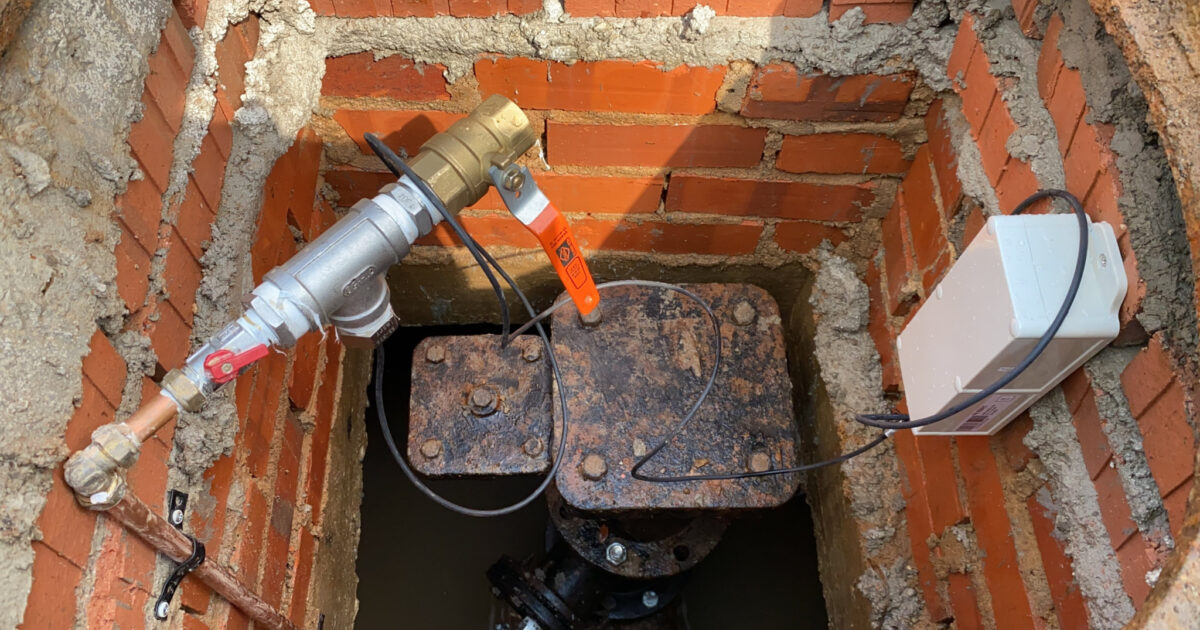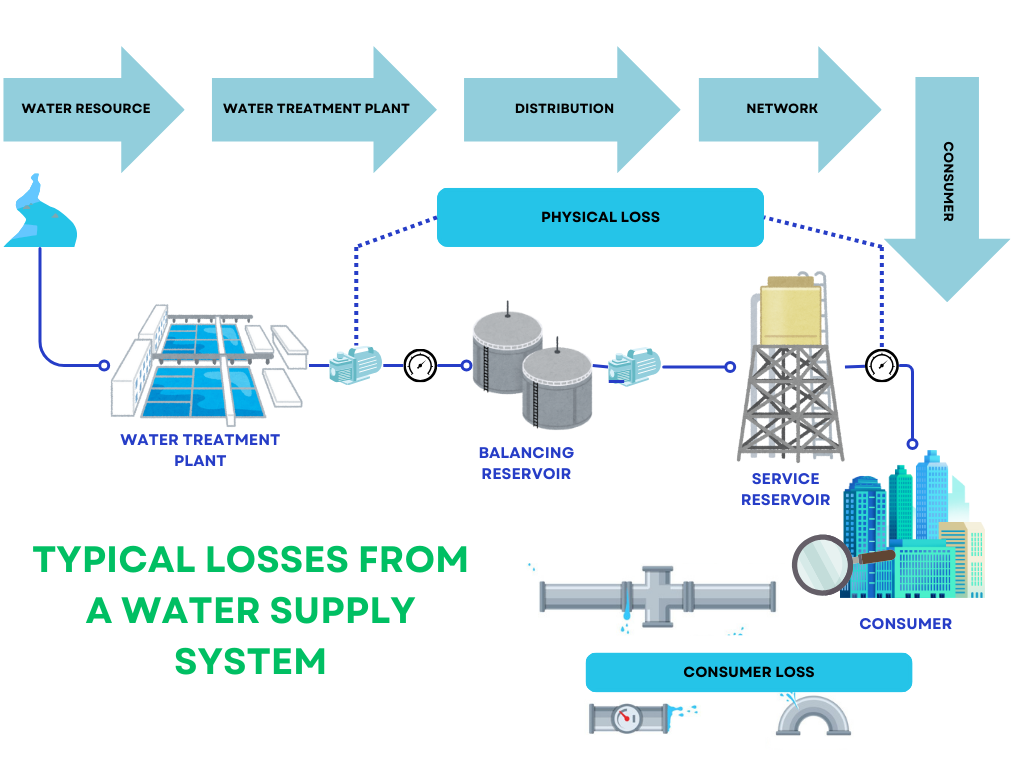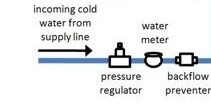Team YA – IN 2 Qualgrip of the challenge 5 data driven water security and safety
In a bustling city facing increasing water scarcity and infrastructure challenges, the local government and utility companies are under pressure to improve their water management systems. Aging pipes, leaks, and inefficient monitoring are contributing to significant water loss and rising operational costs.
How can municipal water utilities in India use their existing water pipe networks to quickly identify problems and reduce water losses in small-scale distribution systems?

PROBLEM OVERVIEW
The story culminates in a vision of a sustainable future, where cities harness the power of emerging technologies and IoT to create resilient, efficient, and environmentally friendly water systems. Nowadays, scarcity of water is considered a problem of paramount importance due to overpopulation; However due to immense water use, as well as an increased concern over water sustainability and conservation; many governmental and non-governmental organizations around the world are working together to tackle this problem. Additionally the distribution of water and ensuring that communities receive an adequate and accountable quantity through the water network or grid is another significant concern.
Municipal utility providers in India are facing significant challenges in managing non-revenue water (NRW), which currently accounts for approximately 40-50% of total water production in many cities. The primary sources of NRW include physical loss of water due to leaks and , which result in substantial financial losses and inefficiencies in water distribution

.
SCOPE: This non revenue water goes unaccounted for due to the condition of the service line delivery system. As water resource assessment system requires a considerable investment therefore the emerging technologies are persistently tested; the technology and software to reduce and control your water usage while protecting the assets. Having a solution that supports with the plumbing infrastructure, allows the system’s sensors and modules to capture signals simultaneously. System-to-sensor communication enables operators to automatically detect leaks and other anomalies and automatically shut down problem areas for maintenance.
“Each problem has multiple solutions! if you do not find it; it is because you are playing by the rules“
Paula Mandraccio
Implementing a smart metering infrastructure based on smart sensors allows waterworks – utility companies to act more efficiently, streamlining the deployment of smarter, more sustainable solutions.
How is the Solution developed?
The project proposes to prepare a new add on device for water activity observation and conditioned data acquisition system. The function of the system is to acquire water usage information: In order to effectively manage the data, measurement is a crucial step. Once the data is acquired regarding the supply quantity and usage quantity , we can analyze and operate on it accordingly. This can be achieved by connected sensors

This is the typical Indian scenario of a junction or major duct where the access for fitting sensors is possible. It is a conjunction of service pipes and distribution lines where the valves are manually operated.
This is the spot where the engineering equipment are introduced, regular inspections are done to check the state of working.
We are developing a solution that retrofits connected sensors into existing pipe nodes within the network to detect the water leaking, and other inefficiencies in the water grid, enabling municipal utility providers to have a real-time monitoring system. The connectedness forms by tagging of sensors for the addressing in Internet of Things setup.
The IoT enabled system and potential use cases through the solution:
- Technically enabling real-time monitoring
- Optimization
- Remote operations
- Ensuring optimal resource utilization

The idea is to make a device used to fit in the pipe network. As an IoT enabled sensor, this will be performing a sensing activity of the physical phenomena of flowing water inside pipe and acquires data as ground truth from the new connected sensor system.
Technological interventions to adhere the quantitative aspects of the water loss
The observation is through an in-pipe device that can be fit robustly enough and Ingress protected for water-filled pipes & collection tanks in line with the flow. These sensors are designed to measure volumetric parameters (flow, pressure) and get acoustic sound signatures in the water distribution network.

The localized sensor system can work in tune with the instruments and the calibration is based on the readings from these units.
Inline sensors for pipes can be used to monitor the water system by leveraging new connected technologies.
This approach not only minimizes the environmental impact but also promotes water conservation and resource optimization. The product can be used in both open-cast and underground operations, thus avoiding unnecessary digging of ground.
In contrast to the current industry which is resource-intensive, this solution offers several unique and innovative aspects that differentiate it from conventional methods. It also reduces the time and resources spent manually checking water meter readings, which can lead to significant efficiency gains. Interconnected systems for transmitting can produce equitable distribution, minimizing the exploitation. Improved technologies, such as smart meters and IoT sensors, can provide real-time data. These systems can automatically capture and transmit readings, also run in different modes for timely information.
Keywords
equitable distribution
calibration of the sensors
Water activity observation
Inline sensing in water pipes
Different modes of operation
Usage statistics for water as an asset than a resource
The run time of the sensor unit is equivalent to the intermittent supply in the service delivery mains and the ground data is recorded. This can increase operational efficiency integrating edge computing solutions for data acquisition and reporting, we can optimize resource allocation and decision-making. This shift from manual readings to water activity observation through a platform like Qualgrip enhances overall management and monitoring of water usage.

The benefits include easy to set up and reduced operational expenditure associated with installation. Adopting these technologies ultimately results in cost savings and improved resource assessments. Since we are targeting supply points of localities in the municipality areas, the water audit processes involved in these systems often require less frequent maintenance compared to traditional sensors/meters.
As a result, ongoing operational costs are lower, and system reliability is enhanced. Furthermore, automated systems often come with comprehensive support and updates, ensuring long-term efficiency and reducing the likelihood of costly repairs. This streamlined approach saves on hold-up problem and also contributes to cost-effective methods and remote monitoring capabilities reduce the need for manual interventions and on-site visits.
Our startup turning company : QualG to get page of the company; comprises researchers and pre-product development scientists, The engineers’ innovative approach becomes a model for urban water management nationwide.
References:
- Iyswarya Narayanan, Arunchandar Vasan, Venkatesh Sarangan, and Anand Sivasubramaniam. 2014. One meter to find them all: water network leak localization using a single flow meter. In Proceedings of the 13th international symposium on Information processing in sensor networks (IPSN ’14). IEEE Press, 47–58
- F. Kayaalpa,*, A. Zenginb, R. Karac, M.A. Buyukguclua, 2014, Water Powered Sensors In Water Distribution Systems, Turkish Journal of Engineering, Science and Technology, Volume 01: 24-31.
- https://www.fluidconservation.com/products/hydrophone-2-leak-detection/
- https://stateofgreen.com/en/news/the-importance-of-reducing-non-revenue-water/
- Jon E. Froehlich, Eric Larson, Tim Campbell, Conor Haggerty, James Fogarty, and Shwetak N. Patel. 2009. HydroSense: infrastructure-mediated single-point sensing of whole-home water activity. In Proceedings of the 11th international conference on Ubiquitous computing (UbiComp ’09). Association for Computing Machinery, New York, NY, USA, 235–244. https://doi.org/10.1145/1620545.1620581
- https://indianinfrastructure.com/2023/05/29/water-losses-nrw-impact-and-reduction-initiatives/
- https://iwaponline.com/
- https://www.waterdiplomat.org/
